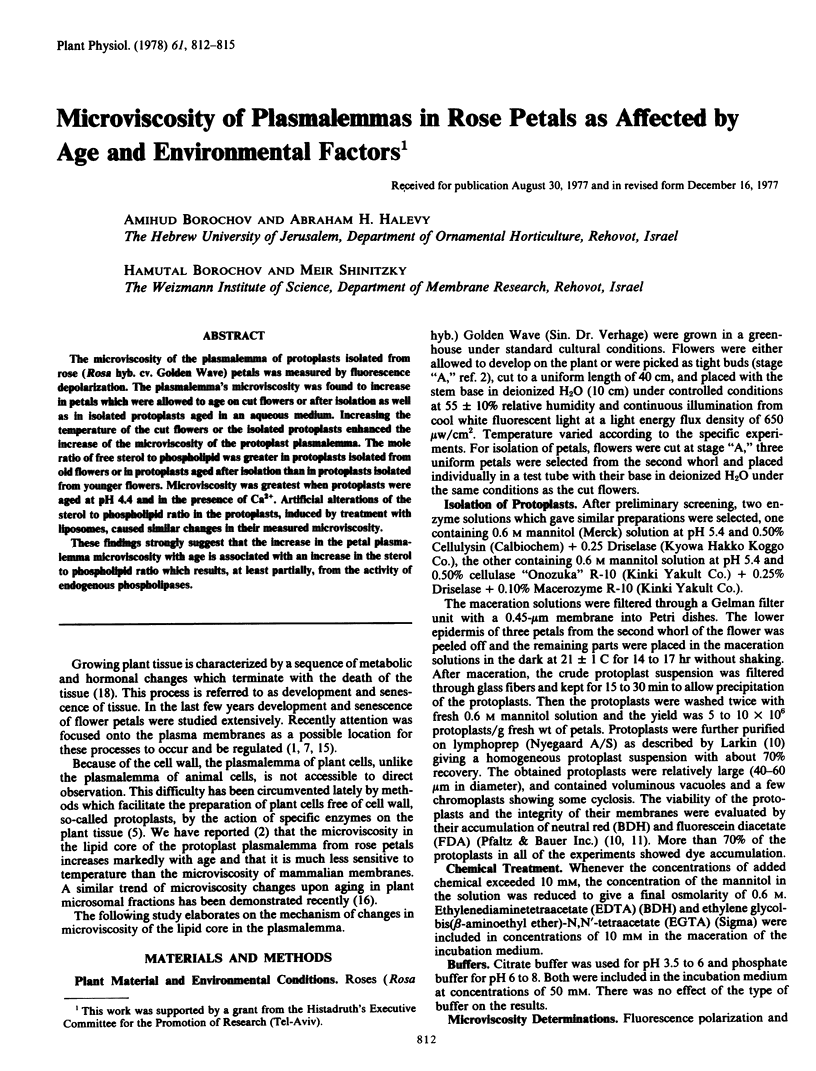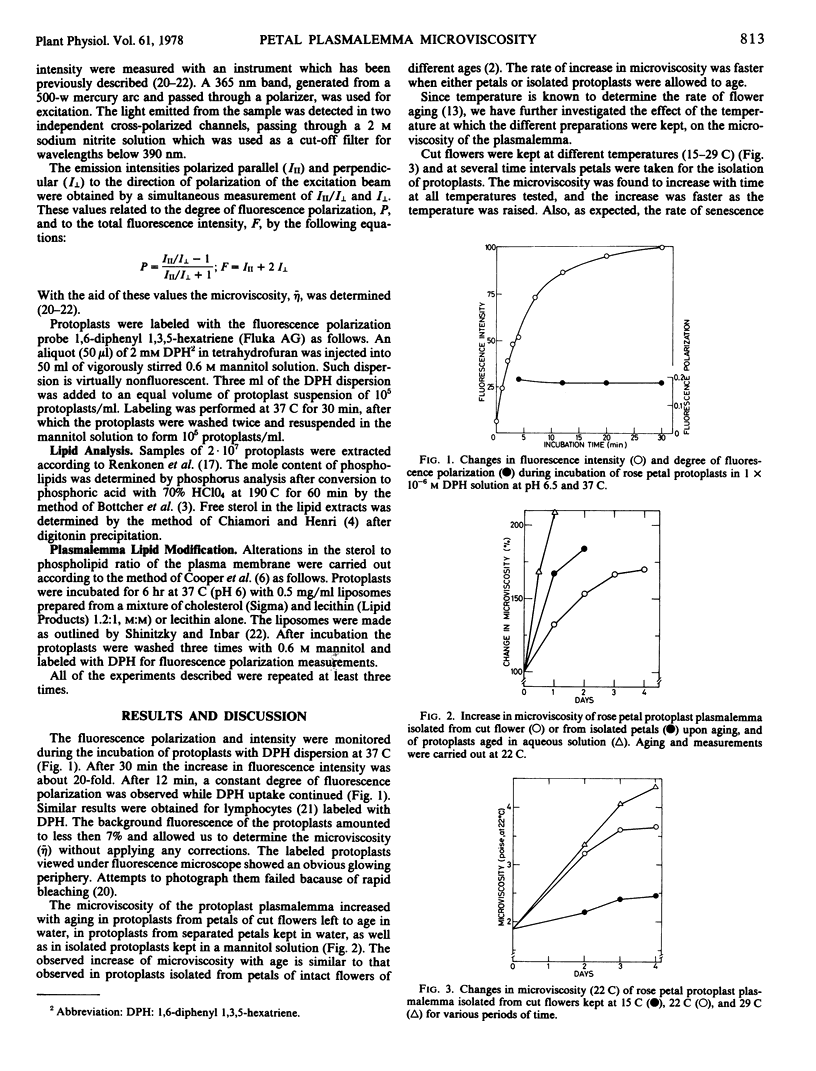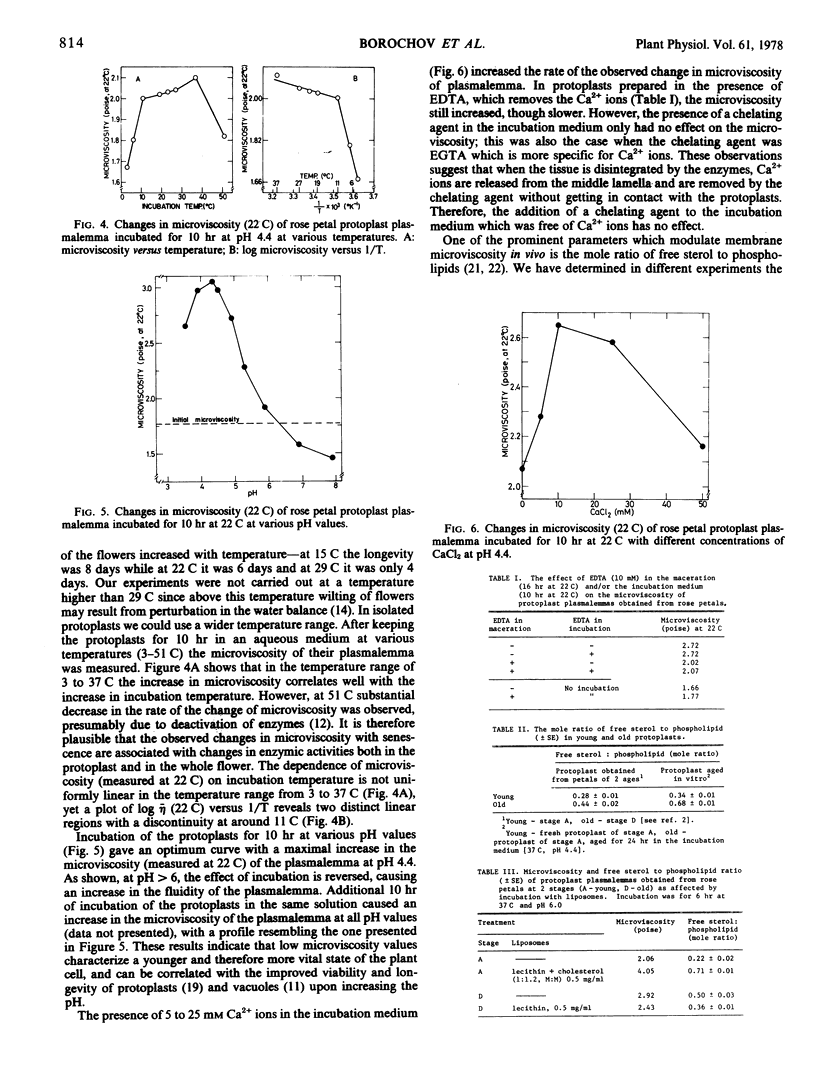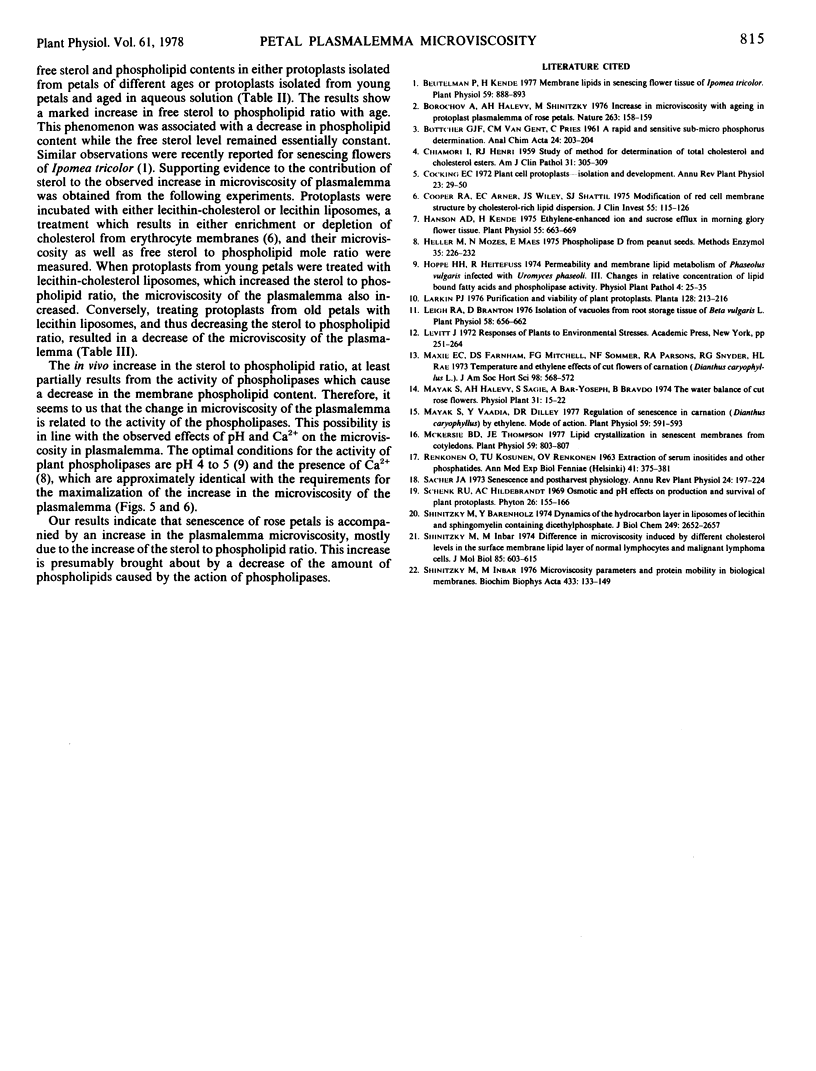Abstract
The microviscosity of the plasmalemma of protoplasts isolated from rose (Rosa hyb. cv. Golden Wave) petals was measured by fluorescence depolarization. The plasmalemma's microviscosity was found to increase in petals which were allowed to age on cut flowers or after isolation as well as in isolated protoplasts aged in an aqueous medium. Increasing the temperature of the cut flowers or the isolated protoplasts enhanced the increase of the microviscosity of the protoplast plasmalemma. The mole ratio of free sterol to phospholipid was greater in protoplasts isolated from old flowers or in protoplasts aged after isolation than in protoplasts isolated from younger flowers. Microviscosity was greatest when protoplasts were aged at pH 4.4 and in the presence of Ca2+. Artificial alterations of the sterol to phospholipid ratio in the protoplasts, induced by treatment with liposomes, caused similar changes in their measured microviscosity.
These findings strongly suggest that the increase in the petal plasmalemma microviscosity with age is associated with an increase in the sterol to phospholipid ratio which results, at least partially, from the activity of endogenous phospholipases.
Full text
PDF



Selected References
These references are in PubMed. This may not be the complete list of references from this article.
- Beutelmann P., Kende H. Membrane Lipids in Senescing Flower Tissue of Ipomoea tricolor. Plant Physiol. 1977 May;59(5):888–893. doi: 10.1104/pp.59.5.888. [DOI] [PMC free article] [PubMed] [Google Scholar]
- Cooper R. A., Arner E. C., Wiley J. S., Shattil S. J. Modification of red cell membrane structure by cholesterol-rich lipid dispersions. A model for the primary spur cell defect. J Clin Invest. 1975 Jan;55(1):115–126. doi: 10.1172/JCI107901. [DOI] [PMC free article] [PubMed] [Google Scholar]
- Hanson A. D., Kende H. Ethylene-enhanced Ion and Sucrose Efflux in Morning Glory Flower Tissue. Plant Physiol. 1975 Apr;55(4):663–669. doi: 10.1104/pp.55.4.663. [DOI] [PMC free article] [PubMed] [Google Scholar]
- Heller M., Mozes N., Maes E. Phospholipase D from peanut seeds. EC 3.1.4.4 phosphatidylcholine phosphatidohydrolase. Methods Enzymol. 1975;35:226–232. doi: 10.1016/0076-6879(75)35158-6. [DOI] [PubMed] [Google Scholar]
- Leigh R. A., Branton D. Isolation of Vacuoles from Root Storage Tissue of Beta vulgaris L. Plant Physiol. 1976 Nov;58(5):656–662. doi: 10.1104/pp.58.5.656. [DOI] [PMC free article] [PubMed] [Google Scholar]
- Mayak S., Vaadia Y., Dilley D. R. Regulation of Senescence in Carnation (Dianthus caryophyllus) by Ethylene: Mode of Action. Plant Physiol. 1977 Apr;59(4):591–593. doi: 10.1104/pp.59.4.591. [DOI] [PMC free article] [PubMed] [Google Scholar]
- McKersie B. D., Thompson J. E. Lipid crystallization in senescent membranes from cotyledons. Plant Physiol. 1977 May;59(5):803–807. doi: 10.1104/pp.59.5.803. [DOI] [PMC free article] [PubMed] [Google Scholar]
- RENKONEN O., KOSUNEN T. U., RENKONEN O. V. EXTRACTION OF SERUM INOSITIDES AND OTHER PHOSPHATIDES. Ann Med Exp Biol Fenn. 1963;41:375–381. [PubMed] [Google Scholar]
- Shinitzky M., Barenholz Y. Dynamics of the hydrocarbon layer in liposomes of lecithin and sphingomyelin containing dicetylphosphate. J Biol Chem. 1974 Apr 25;249(8):2652–2657. [PubMed] [Google Scholar]
- Shinitzky M., Inbar M. Difference in microviscosity induced by different cholesterol levels in the surface membrane lipid layer of normal lymphocytes and malignant lymphoma cells. J Mol Biol. 1974 Jan 5;85(4):603–615. doi: 10.1016/0022-2836(74)90318-0. [DOI] [PubMed] [Google Scholar]
- Shinitzky M., Inbar M. Microviscosity parameters and protein mobility in biological membranes. Biochim Biophys Acta. 1976 Apr 16;433(1):133–149. doi: 10.1016/0005-2736(76)90183-8. [DOI] [PubMed] [Google Scholar]


